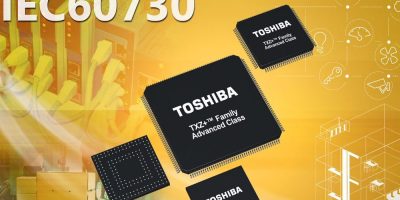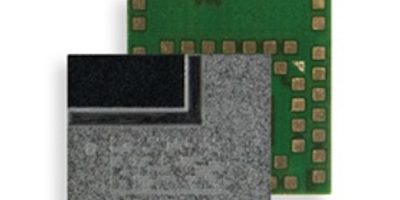To simplify the design of ASIL B and ASIL C safety applications using dsPIC, PIC18 and AVR microcontrollers, Microchip offers certified functional safety packages.
The certified functional safety packages enable automotive engineers to develop products as per the ISO 26262 functional safety standard. Microchip is releasing ISO 26262 functional safety packages for dsPIC33C digital signal controllers (DSCs), PIC18 and AVR microcontrollers (MCUs) to accelerate the development of safety-critical designs targeting ASIL B and ASIL C safety level and certification efforts.
The functional safety ecosystem for dsPIC33C DSCs includes AEC Q100 Grade 0-qualified functional safety ready dsPIC33C DSCs with dedicated hardware safety features. There are also SGS TÜV Saar-certified ASIL B-ready failure modes, an effects and diagnostic analysis (FMEDA) report and functional safety manual (FSM).
Designers can also access TÜV Rheinland-certified functional safety diagnostic libraries for designs targeting up to ASIL C and a functional safety reference application, showing the steps required to develop compliant designs, and the collateral that must be generated for (ASIL B or ASIL C) compliance
There are also various functional safety analysis reports and certification reports to assist compliance and certification.
For PIC18 and AVR MCUs, the functional safety ecosystem includes AEC Q100 Grade 1-qualified functional safety ready PIC18-Q84 MCUs with CAN FD and AVR DA MCUs with LIN interfaces and both with hardware support for capacitive touch sensors.
There is also the SGS TÜV Saar-certified ASIL B ready FMEDA report and FSM. In addition to functional safety diagnostic libraries, there are also ASIL B-ready certificates and certification reports.
Whether an engineer is new to ISO 26262 functional safety or a seasoned expert, Microchip says it is able to help them meet functional safety requirements and certify designs while minimising cost, risk and development time.
The functional safety packages, together with development tools (complete with the safety documents) allow engineers to develop compliant systems.
Microchip is offering three ISO 26262 functional safety packages to help customers with different levels of expertise and in different stages of their evaluation and design cycles.
The first is the functional safety basic package which offers basic resources like the ASIL B-ready certified FMEDA and safety manual to begin the evaluation of target functional safety levels and the design of safety-critical automotive applications.
Next is the functional safety starter package which offers ASIL B-ready certified FMEDA and safety manual, a reference application and ASIL C-compliant diagnostic libraries that help designers understand the ISO 26262-compliant development process and the reports that must be generated for compliance.
Thirdly, the functional safety full package is for beginners and seasoned experts to simplify the design and certification of safety-critical automotive applications. In addition to the offerings of the starter package, it includes certified diagnostic libraries with source code and the associated safety analysis reports for designs targeting up to ASIL C.
In addition to the functional safety packages, Microchip offers a TÜV SÜD-certified design tool package for its MPLAB development tools ecosystem. This includes a TÜV SÜD-certified MPLAB XC functional safety compiler with the TÜV SÜD certificate, a functional safety manual for the compiler along with safety plans and complete tools classification and qualification reports for the compiler, MPLAB X integrated development environment (IDE), MPLAB Code Coverage and all MPLAB development ecosystem programs. Microchip also offers functional safety-ready CAN FD and LIN transceivers and other companion devices, including voltage supervisor devices, which can be used with the functional safety ready DSCs and MCUs in a range of automotive applications.
The ISO 26262 functional safety ready dsPIC33C DSCs, and PIC18 and AVR MCUs are supported by the TÜV SÜD-certified MPLAB XC16 and MPLAB XC8 functional safety compilers (SW006022-FS and SW006021-FS), the MPLAB Code Coverage tool (SW006026-COV), MPLAB X IDE, MPLAB development ecosystem debugger/programmers and the safety documentation package to make the tool qualification effort easier.







